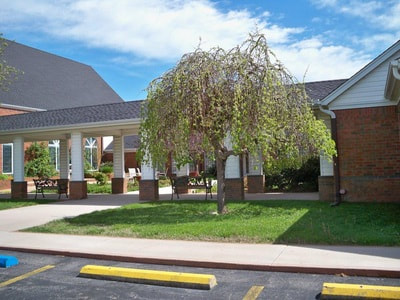|
Ozark Green Thumb BCMG Monthly e-Newsletter |
|
|
|
Master Gardener's are a fun group of folks and enjoy sharing our love of gardening with any visitor. At our meeting we have speakers, refreshments, & fun. Come join us at one of our meetings.
Meeting Dates: December 14th. from Noon - 2:00 pm Meeting Place: The First Presbyterian Church 1106 Spring Street Mountain Home, AR Annual Christmas Lunch: Bring your own tableware Master Gardeners Monthly Radio Program: Mountain Talk Radio 97.1 7:15 a.m. Master Gardener Hosts are Ceil Gasiecki and Tommy Hagan Directions: From Mountain Home Take US Hwy. 62B East through Mountain Home until you come to Cardinal Street. Cardinal Street is the intersection just past Harp's Grocery. Turn right onto Cardinal Street and travel South until you come to the first stop sign which should be Spring Street. Turn left onto Spring Street and go down the hill past the bridge and the First Presbyterian Church will be on your right hand side. From Gassville: Take Hwy. 62/412 towards Mountain Home. Once you get to Mountain Home continue on into Mountain Home on US 62B. This will take you through town till you get to Harp's Grocery and you come to Cardinal Street. Cardinal Street is the intersection just past Harp's Grocery. Turn right onto Cardinal Street and travel South until you come to the first stop sign which should be Spring Street. Turn left onto Spring Street and go down the hill past the bridge and the First Presbyterian Church will be on your right hand side.
0 Comments
GARDEN CHECKLIST
Some things gardeners need to be considering for September. The following is a garden checklist:
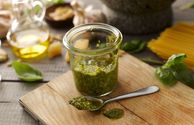 Fresh herbs add pizzazz to any meal. You can use your garden-fresh herbs all year with one of these easy techniques. FREEZING Freezing preserves essential oils that give herbs their flavor. Freezing herbs is easy. There's no need to blanch them; just rinse, remove the leaves from the stems and let them dry on a flat tray. You can put a bunch of these leaves together in a bag to freeze them. You'll end up with a clump of herbs that you can cut up and add to sauces, soups, ect. You can also freeze the leaves individually first on a flat tray (like a cookie sheet) and then place them in a plastic bag; when you open the bag later you can pick out as many individual leaves as you like. Another great method is to blend the herbs with oil to make a paste, which you then freeze in a plastic container, bag or in ice cube trays. You can freeze just one type of herb, such a basil, or make your own blend, such as oregano, thyme, parsley and sage. DRYING Some herbs, such as oregano, sage and thyme, can be air dried. Just hang small bunches in a well ventilated room, away from light. When leaves are dry, remove them from their stems and store in an airtight jar. Unless you live in a very arid climate, herbs such as basil or parsley, which have thick succulent leaves, are better dried in a dehydrator. Once dry store them in an airtight container. Whatever method you choose, be sure to harvest herbs after the flower buds appear
but before they open. That way, you'll be sure to get the highest concentration of essential oils. Early morning is the best time to pick your herbs, after the morning dew has evaporated but before the sun gets too hot. By: Kathy LaLiberte 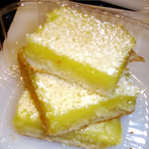 An easy to bake snack with a sweet and slightly tart taste. Goes well with coffee or tea.
Directions:
1. Combine first 4 ingredients until reasonably smooth and pack into a 9x13 inch greased pan. Bake 15 to 20 minutes at 350 degrees but do not brown. 2. While crust is baking, prepare topping by combining the last 6 ingredients. Pour over bottom crust and bake 20 to 25 minutes at 350 degrees. 3. Sift powdered sugar over top while still warm. Cut into squares. Let cool before removing from pan. 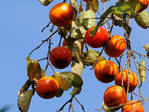 I’ve always suspected that possums have that smirky grin because they are fantasizing about the coming persimmon feast. Country folk enjoyed the persimmon too. The mushy native fruit was a diversion from their humdrum diet. Our old friend, the persimmon, is a botanical trickster and folk who have fallen victim to its puckering ways hold grudges. The alternately arranged, ovate leaves are four to six inches long and gray-green in color. They may turn a yellow-brown in the fall but color production is unreliable. The bark of old trees is blackish with square, reptilian plates that give trees a handsome winter appearance. Persimmon flowers are white to yellow-green with four petals and sepals. Usually plants are dioecious with either male or female trees, but sometimes flowers of both sexes are found on the same tree. The flowers are not especially showy being small and mostly obscured by the leaves that emerge first. Considerable variability exists in persimmon fruit as to size, color, time of ripening and sensory characteristics such as texture, taste and sweetness. Four large sepals reflex from the top of the fruit, which is yellow, golden or orange in color and covered with a waxy bloom. The usual fruit is about the size of a golf ball-and according to non-believers -- about as tasty. Fruit ripening occurs from September through November with fruit hanging on the tree until early winter. Since the time of the rapid western expansion following the Civil War, agriculturists have been predicting that the persimmon is just on the verge of becoming an important fruit crop. But, alas, it didn’t happen then and it still hasn’t happened. It probably never will. While the Japanese and Chinese have developed over 1000 cultivars of a closely related species they call "kaki," only a few improved selections have been made of our native species. The first European to come into contact with the persimmon was Hernando DeSoto when he crossed the Mississippi River near Memphis in 1541. He found dried fruit and loaves of bread made from persimmon at the ancient Indian village of Casqui which is now the Parkin Archeological Park. Captain John Smith, the founder of the Jamestown colony in Virginia in 1607, wrote of the persimmon: "If it not be ripe, it will drawe a man’s mouth awrie with much torment. When it is ripe, it is deliscious as an Apricock." A uniquely Ozarkian legend has it that one can prophesy the severity of the coming winter by inspecting the seeds of the persimmon. Seeds are cut lengthwise to reveal the embryo suspended in a field of white endosperm. If the embryo is shaped like a knife, it will be a bitterly cold winter. If the embryo is spoon shaped, expect lots of snow. If it is fork shaped, a normal winter is in store. While most consider such prophecies as unfounded superstition, there may be some basis for the observation. If one assumes that summer weather patterns are a predictor of winter weather conditions, it is not illogical to reason that morphological changes could be reflected in the embryos of seeds formed during those summer months. About a dozen cultivars of persimmon are described and a few specialist nurseries offer them over the Internet or through their mail order catalogs. In the garden the persimmon is easily accommodated in about any sunny site. The fall webworm that produces the dirty gray webs in persimmons every fall are more ugly than harmful, a fact you should remember when they invade your tree. By: Gerald Klingaman, retired
Extension Horticulturist - Ornamentals Extension News - October 11, 2002 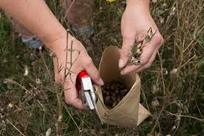 The health of your soil -- including its composition, its nutrients and its ability to hold water -- is all essential to the lives it supports. If your garden or lawn isn't looking so great, maybe it's time to see how your soil is doing. Soil testing can be done in the fall or in the spring before the lawn greens up. The University of Arkansas Cooperative Extension Service offers homeowners free soil testing. Soil testing isn't complicated and the soil samples you dig up can be taken to your local county extension office for testing. How to Gather Your Soil Sample Sample areas around shrubs separately from turf. If you have a large lawn or garden, sample areas separately that have been managed differently or will be managed differently. Use the following procedure in collecting your soil sample:
1. Rake aside mulch or surface litter like leaves. 2. Take soil with a soil probe or shovel from at least 12 spots in each area to obtain a representative sample. A zigzag sampling pattern is preferred. Fertilizer and lime recommendations are no better than the sample taken. 3. Take samples in gardens, lawns, and around shrubs to a depth of about 4 inches and for mature fruit trees at a depth of 12 inches. 4. Mix soil thoroughly from a sample area. Keep different areas separate. Discard rocks, gravels and roots. 5. Allow the soil sample to air dry. Spread the sample on newspapers or large paper bags for a couple of days. Do not heat the sample in an oven to speed drying. 6. Remove one pint for the laboratory sample and place in a clean container or zip top bag. Label each sample with a name that you would recognize. 7. Bring sample(s) to your local County Extension office. Office hours are 8:00am to 4:30pm Monday through Friday. For Arkansas Taxpayers, there is no fee for us to process and run your samples. Out of State samples will be charged $10.00 per sample. 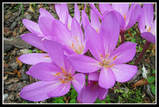 Even in difficult drought years, our gardens can amaze and amuse us. We see tough little plants do their thing under some of the most adverse conditions imaginable. One of these durable little plants is the autumn crocus, which recently began blooming -- a reminder that droughts always pass and better days lie ahead. The soft pink flowers grow about 8 inches tall with blooms 3 inches across. As the plants become established, each corm may produce three to eight stems, each bearing a single flower. The corms are 3 inches across and poisonous.
The plant blooms without foliage. It just appears, as if by magic, as the hottest days of summer begin to pass away. The foliage is broad and almost hosta-like in appearance. It emerges in late winter and withers away with the first hot days of May and June. White-flowered and double-flowered selections are available, as are hybrids such as ‘Autumn Queen’ (violet), ‘Lilac Wonder’ (pinkish-lilac) and ‘Waterlily’ (double-form, lilac mauve). The autumn crocus is not really a crocus. It’s a member of the lily family. It’s widely distributed from northern Africa through southern Europe. Colchicums have long been favorites of gardeners, but before that they were favorites of the early doctors who used them for various medical treatments. The bulbs produce a toxic alkaloid called colchicine that’s still used today to treat gout and rheumatism. Colchicine also has a part to play in creating new and improved garden plants. In 1931, a Bulgarian scientist experimenting with eggplant in his greenhouse used a nicotine spray to control a bug problem he was having. Upon examining the seedlings of those eggplants, he discovered that many seedlings had undergone chromosome doubling -- the creation of tetraploids. This started other scientists looking at related compounds. In the mid-1930s, the husband and wife team of Nebel and Nebel from Geneva, N.Y., discovered that colchicine was the most effective at causing this doubling phenomena. When plants have extra chromosomes, they usually have larger characters: bigger flowers, bigger fruits and larger, thicker leaves. The strawberry, for example, has eight sets of chromosomes that arose naturally from chance doubling and crossing. With the discovery of colchicine, David Burpee’s plant breeders, caught up in the "better living through chemistry" mania that swept post WW II America, began using the drug to double the chromosome numbers of most of their major crops. Their tetraploid snapdragon appeared in 1946 and was soon followed by the enormous cactus-flowered zinnias and tetraploid marigolds. This bigger-is-better philosophy has been carried to extreme in some plants. The delicate beauty of the flower is lost to a Frankensteinian rendition of its former self. In the garden, one would hardly suspect the role that the lovely autumn crocus played in the sex life of marigolds and zinnias. Colchicum is best planted in sunny or partly shaded sites in well drained soils. The corms are planted with the nose of the corm 2-3 inches deep in drifts of a dozen or more. Because the foliage is large, plants should be given at least 8 inches on center spacing. Once planted, the plants should remain undisturbed as long as they are thriving. By: Gerald Klingaman, retired Extension Horticulturist - Ornamentals Extension News - September 15, 2000 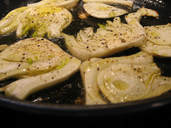 Prep Time: 20 minutes Cook time: 20 minutes Serves: 4 Ingredients:
Directions:
|
Archives
April 2022
|
|
